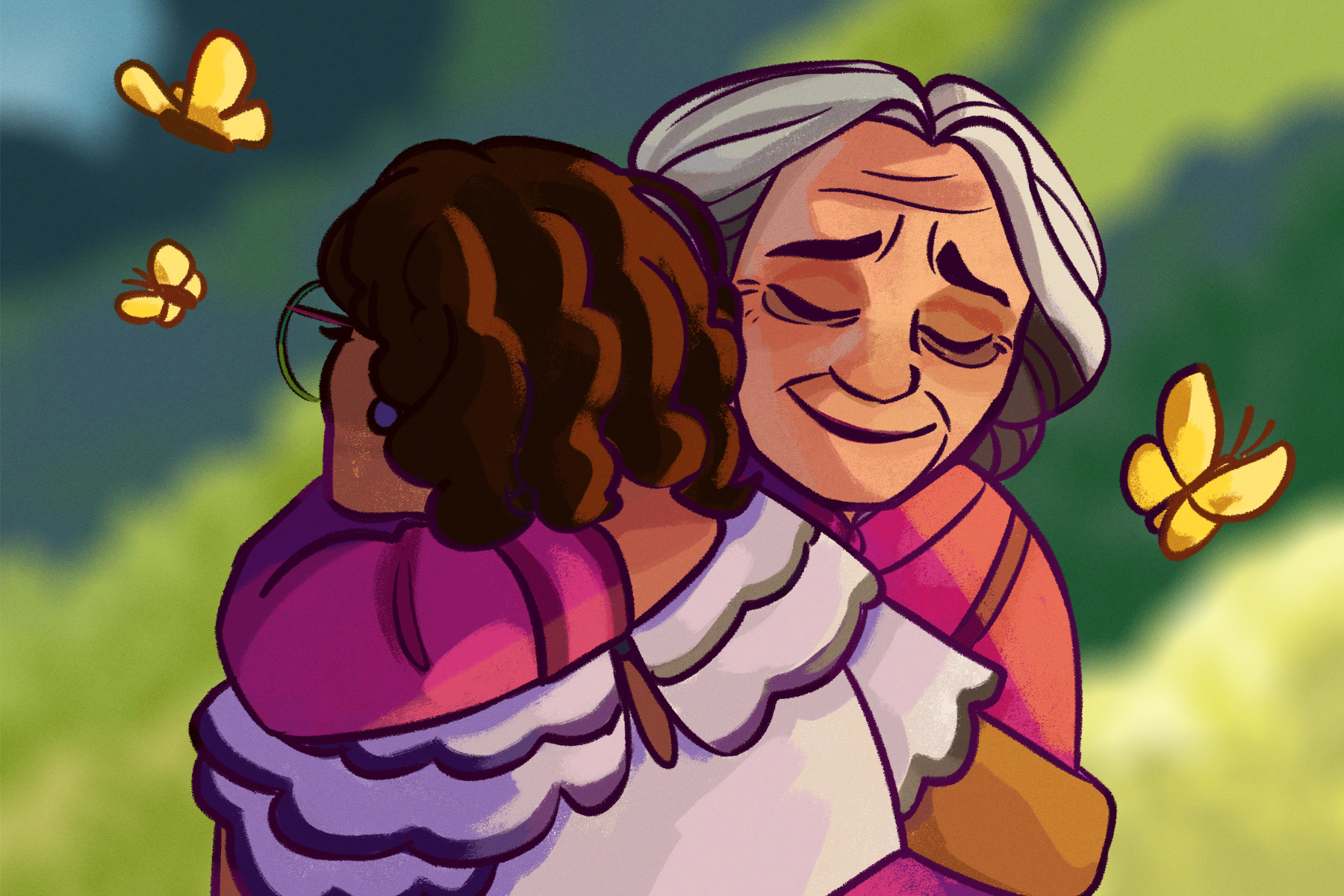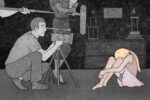Disney films have brought delight and entertainment to generations of families. In the past, they typically centered around fantasy and unrealistic endings for their heroines. Usually, Disney movies star a young female or male lead whose villain is usually a stepmother or some other adult figure in their life. Recently, however, Disney has started to make movies that are more relatable to all members of the family, regardless of age. After all, most people in everyday life don’t struggle with the evils of terrifying beasts and aren’t saved by a faraway prince sweeping them off their feet; more people struggle with family and must learn to work together to solve their issues. Furthermore, many family issues come from past generations of trauma and expectations that are passed down.
Recent films like “Encanto” and “Turning Red” have shed light on generational expectations and trauma among the children and the adults featured in the films. Both depict the struggles encountered by individual members of families and show sympathy for characters who may be viewed as antagonists. “Encanto” and “Turning Red” portray different struggles within the family that both Mirabel and Meilin struggle to overcome throughout the films.
“Encanto”
In “Encanto,” the children and grandchildren struggle with generational trauma. When her husband is killed, the grandmother, Alma, is gifted a miracle candle that conjures up an enchanted home for her and her children that grants the family special powers unique to each person. However, Mirabel does not receive a gift, which prompts Alma to seek out her son, Bruno, who can see into the future. When Bruno tells her that the miracle is dying, she banishes him so that she may stay in control and because his gift would only harm Alma instead of benefitting her and the family.
When Mirabel learns of the dying miracle, Alma tries to assure her that nothing is wrong and warns her to keep out of it. Because Mirabel has wanted to save the miracle ever since she saw the house begin to crack, she tries to fix it, but when she is discovered by Alma, she is blamed for the slow death of the miracle and accused of being jealous of everyone else. As the candle goes out, Mirabel lashes back at Alma, blaming the slowly dying miracle on her need to control the family.
Because of Alma’s need for control, other relatives struggle as well; both of Mirabel’s sisters undergo their own hardships due to Alma’s high expectations. The oldest, Isabela, is pressured to be perfect and marry Mariano from the village to continue the growth of the miracle. It is revealed later that she only agreed to marry him for the family. In the end, her cousin Dolores ends up with Mariano instead; she was secretly in love with him but had to keep it a secret from everyone else.
Mirabel’s other older sister, Luisa, deals with the weight of her family’s expectations for being the strongest, both physically and mentally, and must also remain perfect for Alma by showing no weakness. When the miracle begins to fade, she becomes physically weaker and more emotional, which alarms Alma, who blames Mirabel. In the end, Luisa becomes more in touch with her emotional side while still being strong and knowing it’s okay to feel weak sometimes.
Disney doesn’t hold back on showing the grandmother’s past to give the audience a better understanding of both Mirabel and Alma. In the film, Alma finds Mirabel at the river where her husband had died and the miracle was first granted. Mirabel sees how Alma lost everything that night and was given the miracle candle that saved her. It becomes clear why Alma was controlling over the miracle; she feared losing everything once again. Alma then takes responsibility for losing the miracle and focuses on her family, including Bruno, who comes back. After the reconciliation, the miracle is returned.
https://www.instagram.com/p/CY4QfnVMlnt/?utm_source=ig_web_copy_link
“Turning Red”
In “Turning Red,” Meilin struggles with her mother’s high expectations. When Mei turns 13, she inherits the ability to turn into a giant red panda whenever she expresses deep emotions. Her mother, Ming, mentions a cure and tells her to conceal and control it before the next red moon for them to perform the ritual. Before the panda first came out, Mei had already been struggling to please her mother; in one scene, Mei draws herself with a boy in her journal, and upon discovering it, Ming runs down to the store where he works and demands that he leave Meilin alone. In another incident, Mei asks to go to the 4*Town concert but is turned down. However, Mei begins to see the brighter side of the gift when her friends find out and show that they are quite fond of the panda.
From this point on, Mei and her friends use the panda to earn enough money to go to the 4*Town concert. For the first time, Meilin lies to her mother by saying she has controlled the panda and that she has entered an after-school activity, when really she and her friends are charging money for panda merchandise and pictures with Mei transformed. When Ming discovers Meilin and her friends’ plans, she scolds the friends for taking advantage of Meilin and says they can never hang out with her again.
Due to the fear of upsetting her mother and revealing she’s not the perfect daughter, Meilin refuses to come clean and tell her mother the truth. After seeing videos of her as the panda with her friends, her father, Jin, tells Meilin to not throw away this side of herself. Meilin then attempts to go through with the ritual only to break it and reveal the truth to her mother before running off to apologize to her friends at the concert. Meilin realizes she likes the gift of the panda and doesn’t want to get rid of it like all the other women in the family.
The movie reveals how Ming also fears the disappointment of her own mother, similar to how Meilin feels. When her mother calls, Ming hides on the couch and hesitates to answer the phone. She then tries to assure her mother that she has everything under control, and no one will see Mei’s panda. In response, her mother and sisters come to offer support to Mei. It is also revealed by Jin that Ming never wanted to get rid of her panda and the only time he had seen it was when she was arguing with her mother, which ended in her panda scarring her. When Meilin’s ritual ends, she breaks Ming’s talisman, which causes her panda to come out.
In panda form, Ming finds Meilin at the concert and is accidentally knocked unconscious; all the women then break their talismans to allow the strength of the panda to save Ming. They begin a new ritual, at which point Meilin sees young Ming crying in the astral plane and helps mend her bond with her mother. As each woman conceals their panda in line, Ming accepts Meilin’s decision to keep the panda.
https://www.instagram.com/tv/CbiGnQuAtpQ/?utm_source=ig_web_copy_link
Closing the Gap Within Families
Both Disney movies deal with generational trauma in different ways and allow for both families to find a common ground. The children in these films show the adults how to be more open-minded, while the adults share their experiences and reveal that they act the way they do out of compassion. The endings of these films show the families reconciling and mending their differences. The goal of these movies is to reach out to families who are going through the same struggles and to remind them of the most important thing about family: unconditional love and acceptance.
















